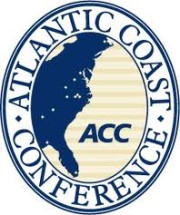What Does Notre Dame’s Departure Mean For PC?
Tuesday, September 18, 2012
When will it stop?
This game of musical chairs throughout college sports is still going and the end may not be as near as one would think.
The latest addition/subtraction was the announcement by the University of Notre Dame that it would be leaving the Big East Conference in favor of the Atlantic Coast Conference last week.
GET THE LATEST BREAKING NEWS HERE -- SIGN UP FOR GOLOCAL FREE DAILY EBLASTThis change is slightly different than most because Notre Dame was not a member of the Big East Football Conference, nor will they join the ACC in the sport of football. The Irish will retain their much desired football independence and all of the benefits that currently come along with it including their national TV deal with NBC.
As part of the move, Notre Dame did agree to schedule at least 5 games annually against ACC football teams and they will be full members of the conference in all other sports with the exception of hockey which is likely headed to Hockey East.
But why is Notre Dame leaving the Big East in favor of the ACC? And what does this mean for the Big East and, more specifically, Providence College as we look toward the future?
The answer to the first question is complex. First of all, it is likely that Notre Dame wants no part of playing with the likes of Houston, Central Florida and Memphis. But, make no mistake about it, this is also about money.
According to various sources, Notre Dame cut itself a sweet deal with the ACC. As a non-football member of the Big East Conference, Notre Dame received the same amount of money annually that a school live Providence College did. That figure is estimated to be in the $4 million range.
Now, even though the Irish will not be football playing members of the ACC, they will reportedly receive a full conference share of just under $18 million annually. That’s a big bump in revenue. In addition to that, the Irish will get to keep the $15 million they receive annually from their exclusive contract with NBC. That estimated $33 million in revenue dwarfs what current Big East football schools receive from their current TV deal which is set to expire. Sources say that Big East football schools receive $9 million annually.
Maybe even more important for Notre Dame, this deal also provides their football program with some semblance of scheduling stability. With college football now heading towards having four super conferences and a new 4-team playoff, scheduling may have become increasingly difficult for the independent Irish. Now they will have 5 guaranteed games each season against ACC opponents.
But what does Notre Dame’s move mean for Providence College? Who knows? However, even without Notre Dame, the Big East will survive.
While PC does not share in the conference’s football revenue, the Big East is currently trying to sell a 12-team league to the television networks that stretches from coast-to-coast. And while it may lack the cache of a Big Ten or an SEC, that should command a decent chunk of change.
From a basketball standpoint, there’s still Louisville, UConn, Villanova and Georgetown as well as the impending new additions of solid basketball programs like Temple and Memphis.
Clearly Providence and the other non-football schools must still feel that it would be more profitable to remain aligned with the football playing members of the Big East, otherwise they would explore branching out on their own.
The big question is, how much TV revenue can be generated from this newly formed Big East Conference and will it offset the additional travel expenses of sending all of your non-revenue sports on the road to schools like Houston and Central Florida?
I have maintained all along that the non-football members of the Big East should strongly consider breaking away from the football schools to create their own league.
A basketball conference with Providence, St. John’s, Villanova, Georgetown, Seton Hall, Marquette, DePaul and possible a Xavier or Dayton would be an extremely viable conference. It would have representation in some major media markets like New York, Philadelphia, Washington DC, Chicago, Milwaukee and Cincinnati.
Could it generate the type of revenue that the current Big East might command from ESPN and the other TV networks? Maybe, maybe not. But it just might generate enough for those schools to rid themselves of the football problem which has plagued the conference for the better part of two decades now.
Take Boston College, for example. The Eagles made the jump to the ACC because they felt that the current and future revenues they would receive from being a member of that conference would be greater than that which they would have received by staying in the Big East.
And while that may be true, what are BC’s additional expenses for all of the traveling they must do? Because, not only are the football and men’s basketball teams getting on an airplane every time they play a road game in the ACC, so too is every one of the non-revenue sports at the school as opposed to the many bus trips they once took as members of the Big East.
Is the additional revenue from the ACC that much greater to have made it a worthwhile move for Boston College? And how about the impact of lost rivalries on attendance at Alumni Stadium and Conte Forum? When Syracuse, UConn and Providence played at Boston College, they would bring with them many fans. Can the same be said for Wake Forest, NC State and Virginia Tech?
Friar fans should ask themselves the same question. Do you anticipate future rivalries with Houston, Central Florida or South Florida like you had with Syracuse, Boston College and Pittsburgh? And, do you want to risk losing any of the other rivalries that you already have?
It would behoove PC Athletic Director Bob Driscoll and his fellow non-football AD’s to have some back channel discussions about the potential for a basketball-only league and whether or not it would be worth pursuing. Because if they stay the course, there will undoubtedly be more changes.
Don’t rule out the possibility of a Georgetown or a St. John’s rounding out the ACC. With Notre Dame, the league is currently at 15 schools but only 14 in the sport of football. If Notre Dame is to remain independent in that sport, then it would be unlikely that the ACC would want to add a school like UConn, Louisville or Rutgers and have an odd number of football teams. However, they may want to add another marquee men’s basketball program and Georgetown and St. John’s represent two very desirable media markets in Washington DC and New York City.
This game of musical chairs is not yet over with, and those who are proactive may find themselves in a much better situation than those sit back and wait it out.




